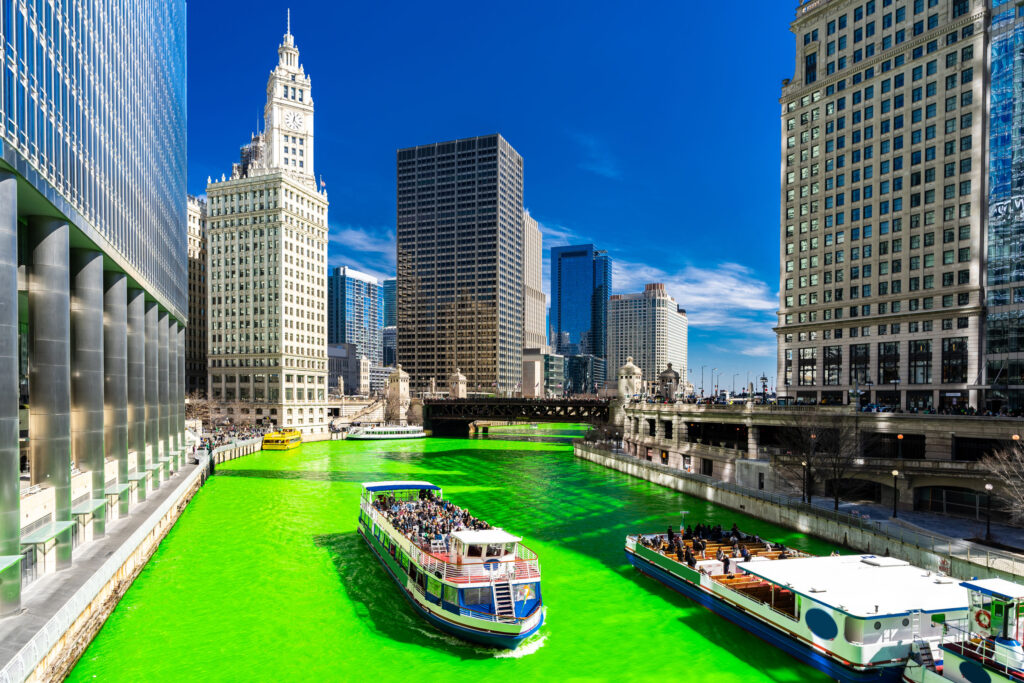
Chicago is one of the best cities in America to enjoy St. Patrick’s Day festivities. With a rich and storied history of jubilant celebration–including dyeing the Chicago River green every year since 1962–St. Patrick’s Day in Chicago is an absolute blast. Whether you’re Irish, a big fan of Irish culture, or just want to party, you’re sure to have an amazing time celebrating the holiday in the Windy City.
As with any large gathering of people, especially one with heavy alcohol consumption, the chances of a personal injury increase on St. Patrick’s Day in Chicago. With that in mind, Lerner and Rowe’s team of Chicago injury lawyers have put together the following tips on how to stay safe while attending holiday events.
Fun Activities on St. Patrick’s Day in Chicago
While St. Patrick is traditionally honored on March 17, the revelry starts a bit early with the annual St. Patrick’s Day Parade. Sponsored by the Plumbers Local 130 UA, the parade has been going strong for 65 years. This year’s parade takes place on March 16, 2024 and kicks off at 12:15 p.m. Get up early and find a good spot to watch the Chicago river dye at 10:00 a.m.
Chicago will also have a number of smaller parades throughout the city and surrounding suburbs. Most parades are family-friendly events that will feature bagpipes, traditional dancers, marching bands, drum corps, floats, and so much more. No matter what part of the city you’re in, it should be easy to find a great time during St. Patrick’s Day in Chicago.
Be Aware of Surroundings to Stay Safe
While many St. Patrick’s Day in Chicago festivities are alcohol-free, the holiday is sure to be full of revelers that have been drinking since the crack of dawn. Large crowds are risky enough but can become more dangerous when alcohol and marijuana are involved. Your local personal injury lawyer Chicago wants you to stay safe while you have fun. Here are some valuable tips to help you do so.
- Be aware of your surroundings: The best way to avoid injuries, especially pedestrian accidents while in a crowd is to stay alert and keep an eye out for danger. Do so by keeping track of your belongings, your family, and all possible exits. Staying alert will also give you ample time to ensure your safety if a negative situation arises.
- Pay attention to the energy of the crowd: If something doesn’t feel right, trust your gut and leave. It’s better to be safe than sorry.
- Have a plan: If you attend festivities with a group, establish a rendezvous point ahead of time in case you become separated.
- Wear appropriate shoes for the event. Your local personal injury lawyer Chicago suggests wearing closed toed, flat shoes in order to protect your feet and toes from getting crushed by other excited revelers. If possible, wear shoes that have good traction in order to avoid a slip-and-fall injury.
- Keep to the edge of crowds. While it may not afford you the best view, the safest place to be in a crowd is near the edges of the group. Stay away from the center of the crowd and closer to the exits to minimize your chance of injury if something goes wrong.
Contact a Chicago Personal Injury Lawyer
Even with the best safety practices, sometimes accidents just happen. If you find yourself hurt because of another’s negligent or reckless behavior during any planned events for St. Patrick’s Day in Chicago, don’t hesitate to give a call to Lerner and Rowe Injury Attorneys. We’re here to help ensure that you get the compensation you deserve.
Lerner and Rowe has a proven track record of recovering sizable settlements for our injury victims. We also provide free consultations and no fee, until we win your case! Contact us through LiveChat or visit our office from 8:00 a.m. to 5:00 p.m. We are also available 24/7 to take your call at 844-977-1900.



